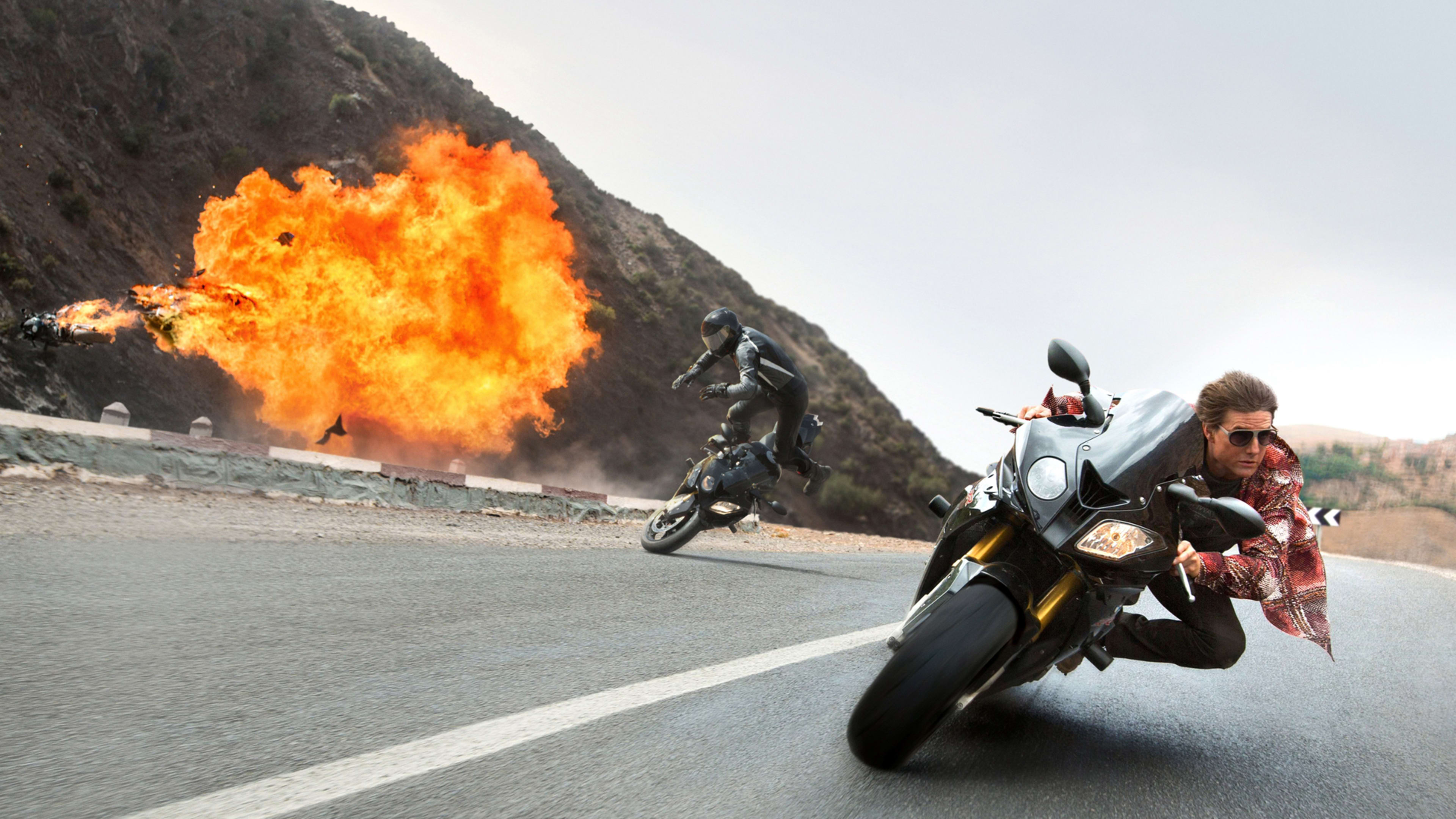Exposition in the Mission: Impossible movies always hits me like a row of party strangers introducing themselves: I retain approximately 1/10th of the information, but trust I’ll have a good time anyway.
Who’s going after the Rabbit’s Foot? What even is the Rabbit’s Foot? Doesn’t matter. All you need is the gist, some popcorn, and a healthy suspension of disbelief regarding government, physics, and the limits of what the human body (or at least any human body that’s not Tom Cruise’s) can endure. The real meat of the impossibly enduring series is the whiz-bang action set pieces, crackling dialogue, and Tom Cruise’s try-hard tenacity. But let’s not forget about the series’ other indispensable feature: the gadgets.
The arsenal of doodads that help Ethan Hunt save an ever-imperiled world is consistently dazzling. While most James Bond movies come equipped with a laser-pencil or two from Q, each new installment of Mission: Impossible promises a massive barrage of elite techno-wizardry. The emphasis on gizmos is a holdover from the late 1960s TV show, its most lasting cultural contribution aside from its immortal earworm of a theme song. Beyond the masks that make an appearance in each film, the TV version featured handy items such as a bulky computer sewn into a tuxedo jacket, which helps its occupant cheat at gambling. By the time Cruise launched what’s now his signature franchise in 1996, state-of-the-art tech had caught up to the original’s gadget-ambitiousness. Or at least it did at the time.
One of the very first things you see in the 1996 adaptation is a not-long-for-this-world Emilio Estevez zooming in on a monitor using what looks like an Atari joystick. There’s also an Apple PowerBook on hand, and later on: floppy disks. A Netscape browser is visible. A character says, “We decoded a message on the internet” in such a way that one imagines audiences at the time cooing, “No way–the internet?!”
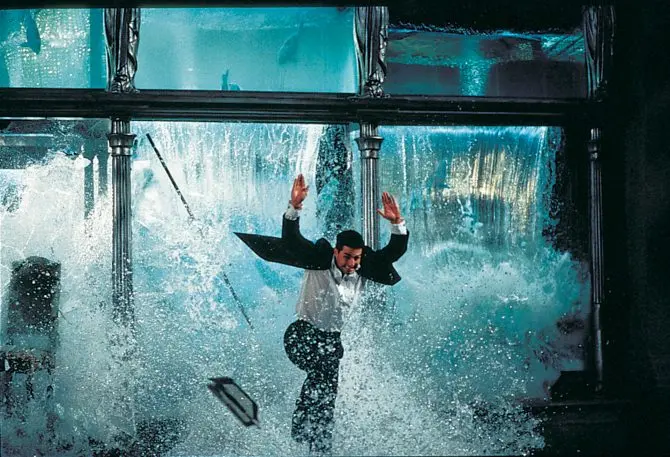
For now, though, here’s a look back at the evolution of the gadgets in the series so far.
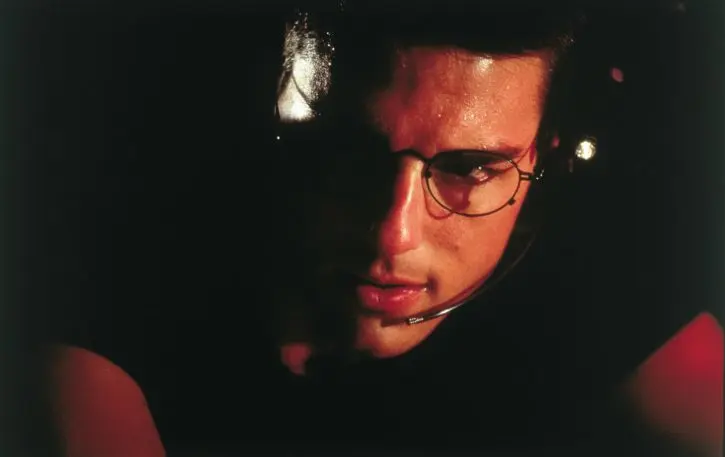
The Masquerade
The most ubiquitous instruments of espionage in the series are the lifelike, identity-assuming masks. You never know who will turn out to be wearing one. Although nobody ever seems to undergo the liposuction procedure John Travolta’s character did to help pass as Nicolas Cage in 1997’s Face/Off, these things apparently work like gangbusters. In the first film, Cruise simply applies old-man makeup that looks alternately like Ross Perot or a decrepit Matthew Modine in two primitive efforts at subterfuge, before revealing a photorealistic Jon Voight mask at a key scene near the end. Mask-tech went through an entire evolutionary leap in the first movie! However, that big reveal is marred by shoddy transitional effects as Cruise removes his Voight-mask, a moment that any 2018 college film student with rudimentary effects skills could top.
M:I 2 doesn’t have much to add to the mask game, beyond a voice changer strip that allows its user to mimic the voice of whoever he or she is impersonating. This is ridiculous. It’s the same kind of device that makes Scream 3 seem silly. (Well, one of the things that makes that movie silly.) If it were possible to instantly reproduce a person’s voice and use it to say anything you wanted, cleanly and clearly, that would unravel the fabric of society as we know it. In fact, many tech prognosticators are fearful of that very outcome, with the advent of DeepFakes recently storming the internet. What seemed like glossy, cinematic chicanery 18 years ago (when both M:I 2 and Scream 3 came out) is now something that could potentially topple elections, and worse.
At least Mission: Impossible 3 has the decency to explain how the voice changer works, in a scene where villain Philip Seymour Hoffman (RIP) is made to say a series of sentences under duress in order to provide a phonetic template. The fourth and fifth movies up the ante by showing viewers the 3-D printing mask machines in action. And not to give too much away about the brand new entry in the series, but in Fallout, the mask-making machine has gotten so portable, it’s the size of a briefcase. If you believe it, you can achieve it!

Your Mission, Should You Choose to Accept It
Another beloved tradition in these movies is when our hero surreptitiously receives an exposition-dump about the next mission, with a message that will self-destruct in five seconds. In the first film, a stewardess offers Jon Voight (who is smoking a cigarette in the sky!) a big clunky cartridge for his small-screen viewing pleasure. Not before accepting an old-fashioned code phrase, though (“Would you consider the cinema of the Ukraine?”) Lest anyone worry that the subsequent films would emulate this subtle bit of spy intrigue, though, the second entry offers a helicopter blasting a pair of retinal-scanning #sponcon Oakleys at Tom Cruise via rocket, which he receives while standing on top of a mountain. (Would you believe that the John Woo-directed M:I 2, which happens to be the one with a Limp Bizkit theme song, is generally considered the weak link in the series?)
From this point on, the authentication tech seems to be going back in time, at least on the surface. The third and fourth movies both feature retinal scanners hidden in outdated tech—a disposable camera and a phone booth, respectively. From there, though, the authentication process changes. The fifth movie finds Cruise in a music store (technically, sadly, also considered outdated tech) verifying his identity with a handprint on the surface of a vinyl record, while the new film serves up a music box that pricks Cruise’s finger to authenticate his very blood. Apparently, whoever is updating these methods is either getting increasingly paranoid or increasingly metal. Perhaps in the next film, Hunt will get verified with a Gutenberg printing press that tests his saliva.
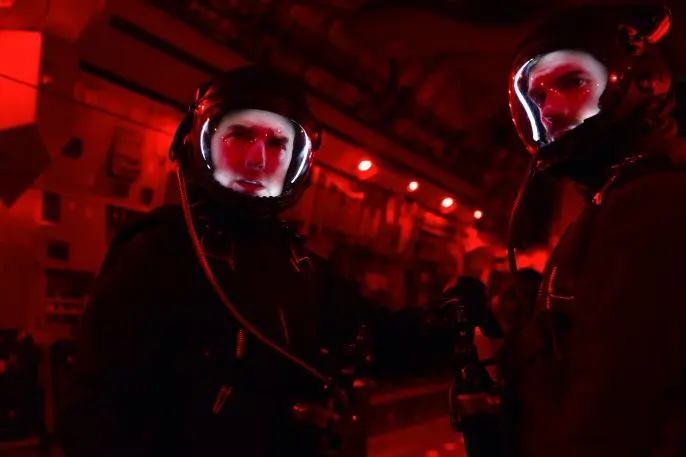
The Eyes Have It
The Mission: Impossible series presents a terrifying but accurate vision of the surveillance state, in which someone is always watching you. With all this monitoring and tracking going on, eye-gear is another prominent aspect of the series’ gadget quotient. In the first film, it’s a key plot point that Cruise can observe everything Jon Voight sees through camera-glasses, from a video screen on Cruise’s watch. Believe it or not, such wearable pre-Google Glass tech counted as nifty back then: 1996 was wild.
By the time we get to Ghost Protocol, however, IMF agents have done way more than upgrade to contact lens cameras (which they have also done, and which we may ourselves soon be doing). These new lenses allow their users to scan every passing face in a crowd until finding a certain match. Later in the film, these contacts are used to photograph and remotely print any document it observes. The moment these lenses become available at the consumer level, SAT score averages will likely skyrocket. It may be sooner than the filmmakers anticipated, though. Google started working on “smart” lenses, the ultimate wearable, in 2014–three years after Ghost Protocol debuted. The tail seems to be wagging the dog now.

Machines of Destruction
Some people just want to watch the world burn, and other people are secret-agent superspies who need to watch small chunks of the world burn in order to carry out their missions. To that end, there are plenty of awesome devices used for burning or destroying things throughout this series. We start off with a bang in the first Mission: Impossible with the quaint but potent exploding gum. Simply join the red half and the green half together, squish, and toss. Then, as Emilio Estevez aptly puts it, “Hasta lasagna, don’t get any on ya.”
These retro gadgets are sometimes the coolest, because of their simplicity and practicality. However, the later films still have some fun ways of making things go boom or burn. In Mission: Impossible 3, the bad guys implant microbombs in their captives’ heads, and some mystery red goo that eats through the side of an armored truck. Cruise escapes from prison in Ghost Protocol with the assistance of some whirring drill thing that eats through an entire concrete floor in seconds. Finally, in Rogue Nation, we’re introduced to Cruise’s small circular device that can instantly heat up glass to the point where it neatly shatters, allowing you access to some decked-out, high-tech aqueduct in the villain’s lair. It makes for decent visual flair, but the exploding gum would have probably gotten the job done too.
It Scans to Reason
The most indelible image in the first Mission: Impossible involves a black-clad Tom Cruise dangling from wires as he tries to retrieve the NOC list from a secure mainframe room in CIA headquarters. It was one of the defining, oft-mimicked pop culture moments of the mid-’90s. Here’s what it looked like in case you’ve forgotten:
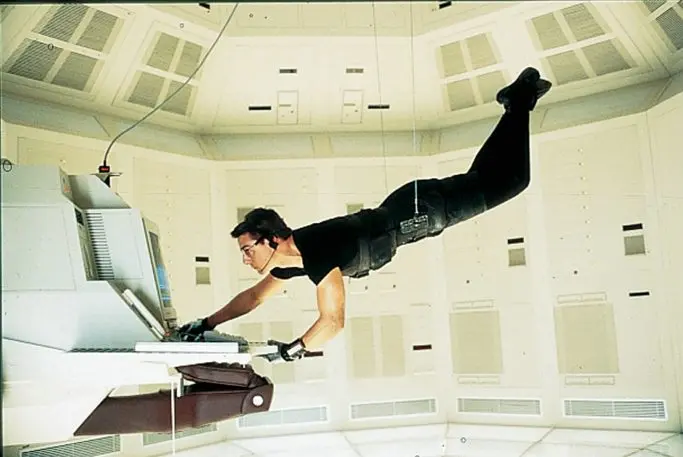
So, Which Mission: Impossible Has the Best Gadgets Overall?
It’s a tight race. The original has its charms. The third film has some practical items that actually exist now (miniature instant photo developer, good for tricking security cams) and some that probably should exist (laser pointer that measures distance, good for rappelling out of a tall building on the fly.) Rogue Nation has some humdingers as well, including a submersible suit that measures the oxygen level inside your lungs on a glove display, a car that opens only after recognizing your fingerprints on the window, an x-ray key manifold that can unlock any door, and of course, a flute gun. M:I 2 is rather light on gizmos, so that leaves one film to bare the distinction of best gadgetry: 2011’s Ghost Protocol.
The tech in Gho Pro is sometimes lo-fi, often malfunctioning, but always slick, imaginative, and ultimately predictive. Here are some favorites:
- A portable, instantly inflatable bouncy castle-type cushion you can toss off a building and land on, just seconds later
- The small satellite dish-looking wand that throws a dripping sound, ventriloquist-style, as a distraction
- Movie screen-like surface that projects a camouflaging image of an empty corridor
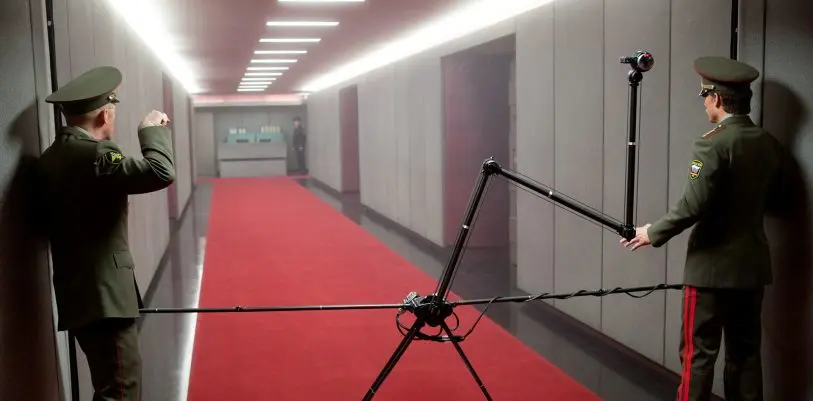
- Reversible jacket that turns from a decorated general’s garb into a common windbreaker
- Small device that magically changes room numbers on hotel room doors (What?)
- Magnetic chain-mail suit that levitates its wearer with the aid of a remote control robot
- Glass- or steel-climbing gloves whose power is measured by color (“blue is glue, red: you’re dead.”)
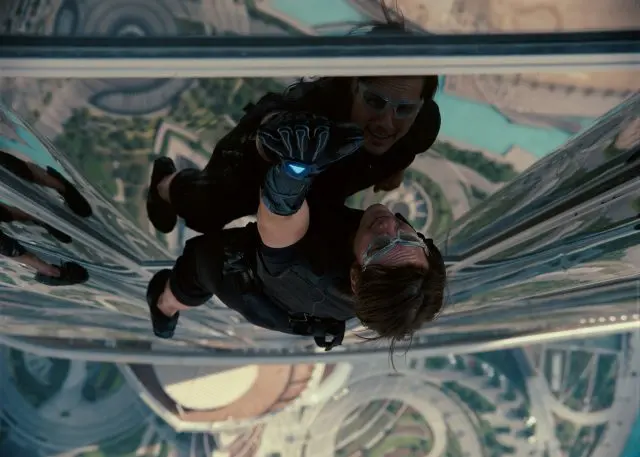
Recognize your brand’s excellence by applying to this year’s Brands That Matter Awards before the early-rate deadline, May 3.
